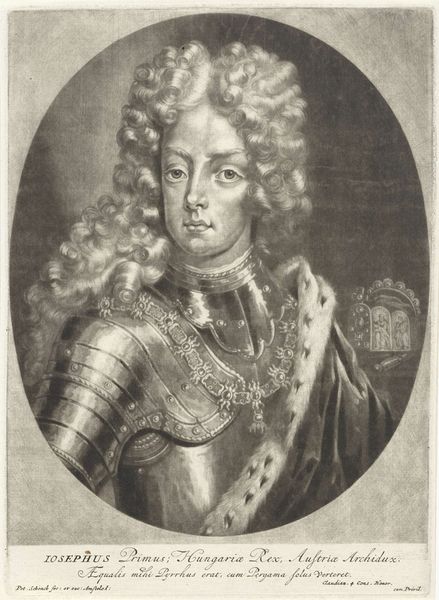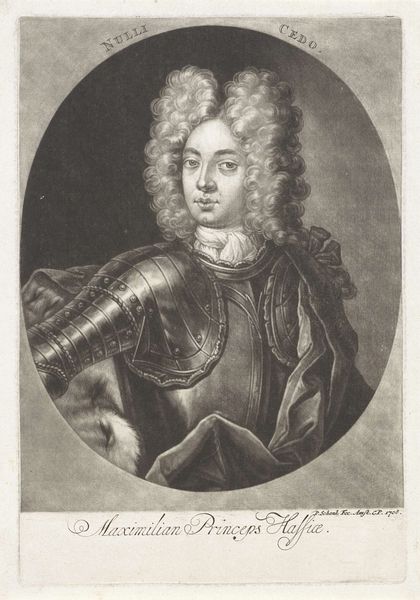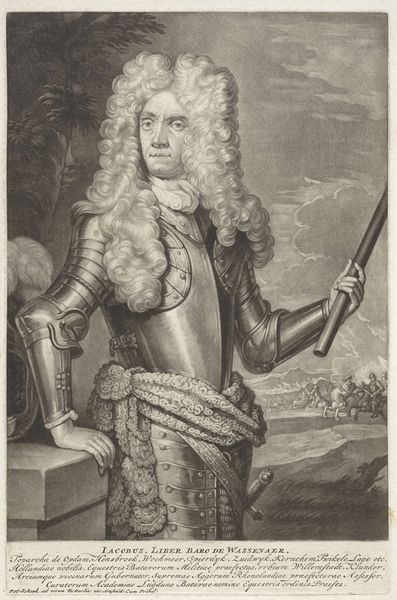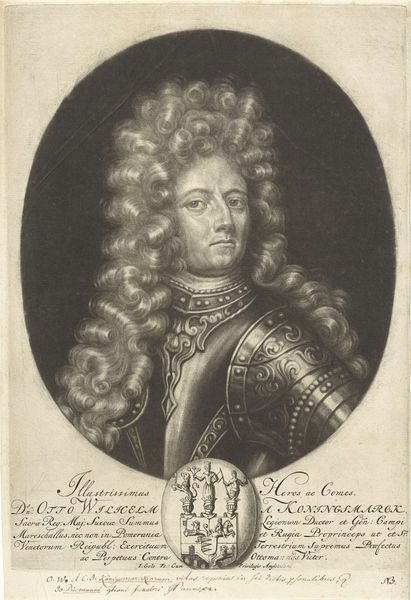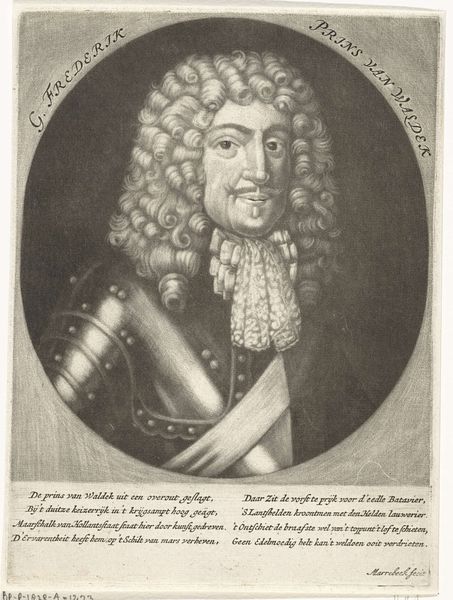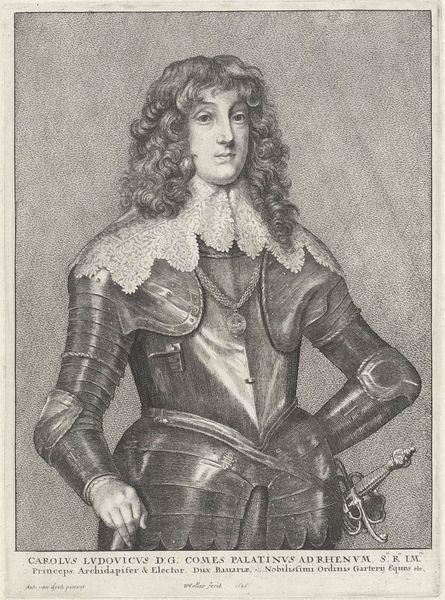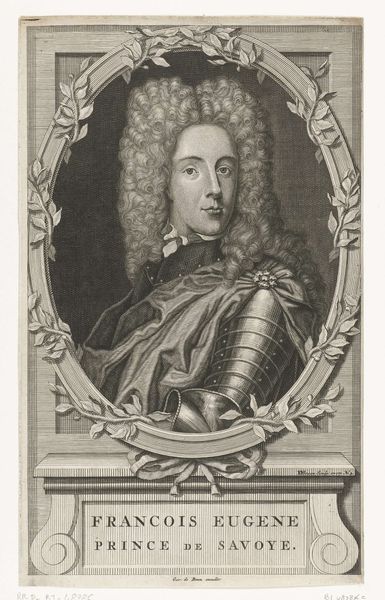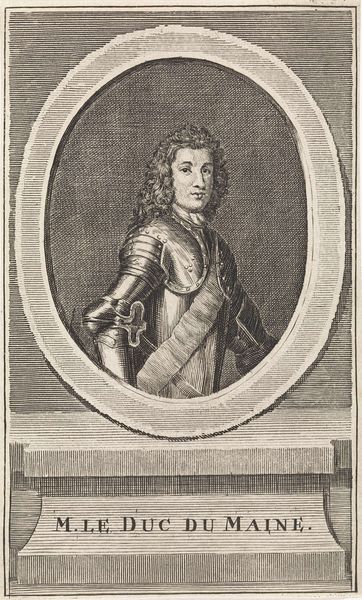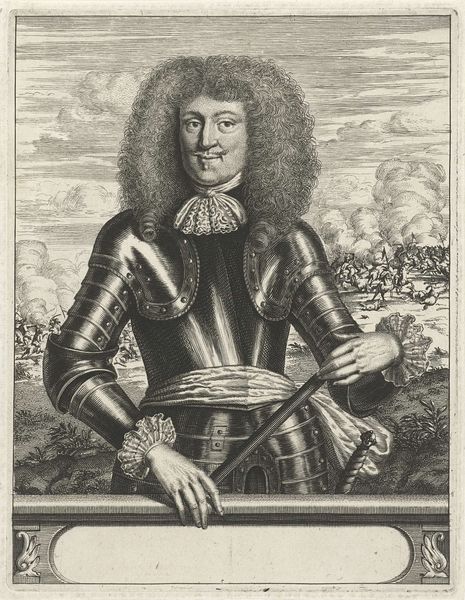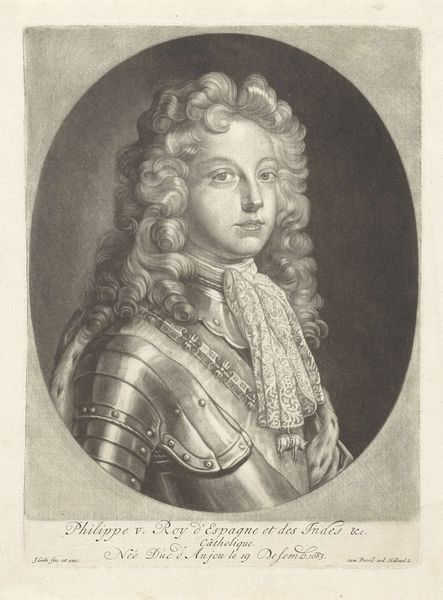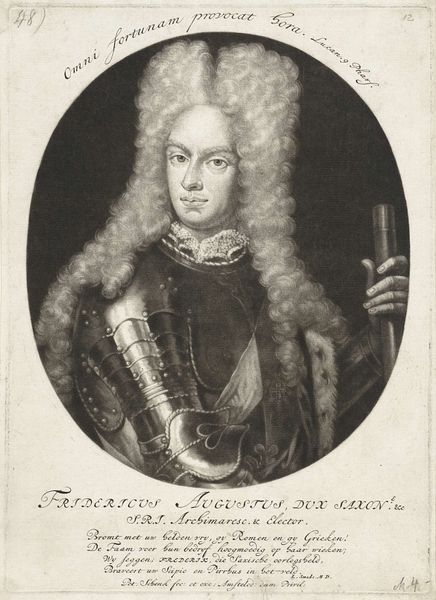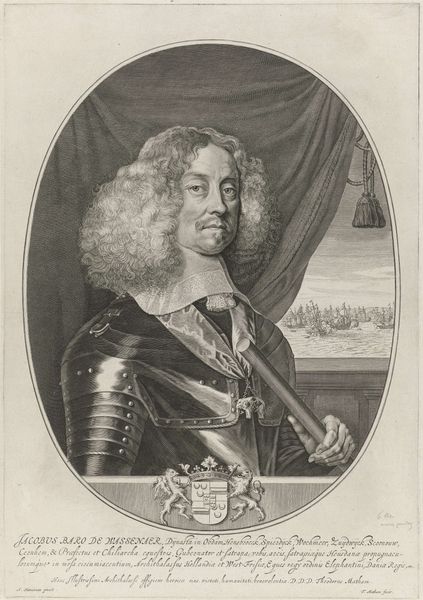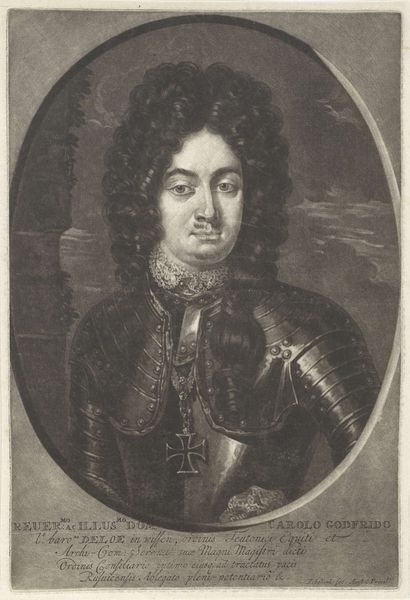
engraving
#
portrait
#
baroque
#
portrait image
#
engraving
Dimensions: height 251 mm, width 179 mm
Copyright: Rijks Museum: Open Domain
Editor: So, here we have a portrait of Augustus II, King of Poland, dating from around 1694 to 1713, made by Pieter Schenk. It's an engraving. The armour looks rather imposing, but his face has an almost unnerving neutrality. What cultural memories do you think it tries to capture? Curator: Indeed. This image operates on multiple symbolic levels, reaching back to classical ideals and forward to contemporary political messaging. Armor traditionally symbolizes strength, valor, and readiness, echoing Roman emperors. But how does the luxurious wig complicate this militaristic symbolism? Editor: It almost seems to soften the message, to add a touch of opulence and courtly fashion. Curator: Precisely. The wig becomes a signifier of refined power. The sword and crown serve as potent symbols, yet they seem to almost fade into the background, compared to the sharp details on the armour and hair. Is it the tension of military strength versus the costuming, an intentional counterpoint? The phrases inscribed in Latin, “Mecum Honos et Laudes” and “Et late Gloria vulnus,” translate to “With me are honor and praises” and “And far and wide, glory wounds”. In effect, war and praise go hand in hand. This isn't simply a depiction, but propaganda of sorts. Editor: That's fascinating. I hadn't considered the engravings as anything other than embellishment. The symbolism feels much richer now! Curator: Cultural memory often speaks in layers.
Comments
No comments
Be the first to comment and join the conversation on the ultimate creative platform.
